Water in the salt compartment of the dishwasher
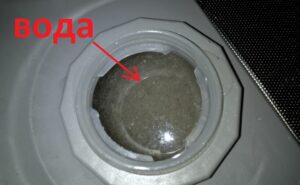 The list of minor troubles that happen with dishwashers is truly enormous, but not every problem requires calling a service center technician. This list also includes the situation when, after a working cycle, water remains in the salt compartment of the dishwasher. Today we will look at what this means, as well as how to deal with it correctly.
The list of minor troubles that happen with dishwashers is truly enormous, but not every problem requires calling a service center technician. This list also includes the situation when, after a working cycle, water remains in the salt compartment of the dishwasher. Today we will look at what this means, as well as how to deal with it correctly.
Should there be water there or not?
When housewives first discover that there is water standing in the PMM salt bunker after work, many of them begin to fear that the equipment has broken down. In fact, there should always be water in the salt compartment. It is needed in this tank in order to create, together with salt, a saline solution, which is necessary for the normal operation of the ion exchanger, which softens hard tap water.
Therefore, the question “what to do” should arise not when there is water in the salt compartment, but when there is not. Any official instructions for a dishwasher will say that before starting the device for the first time, you must first fill the salt bin with water, and then add special salt, which will push all the excess liquid out of the tank. Excess water will go down the drain itself, so owners should not take any additional action for this.
Water in a dishwasher can be found not only in the salt bin, but also in some other parts of the device in order to protect the rubber elements from drying out and damage.
If you don’t want the saline solution to be wasted on the bottom of the washing chamber, then you should follow a number of recommendations.For the salt compartment to work correctly, you need to follow simple steps.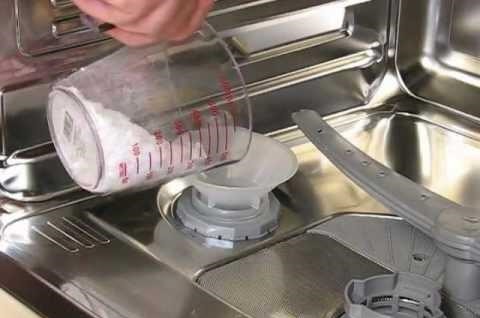
- Load no more than 1-1.5 kilograms of salt into the average PMM at a time. This amount of salt granules should be enough for several months of active use of the machine in medium-hard water conditions.
- Pay attention to the indicator on the machine panel, which indicates the need to add low salt.
- Carefully ensure that the saline solution does not spill out of the hopper onto the metal surface of the washing chamber. If this happens, the liquid must be immediately removed with a cloth so that the solution does not damage the metal elements of the dishwasher.
These simple manipulations will help keep the ion exchanger in order and make any water, even the hardest, soft.
The water in the PMM smells bad
If there is water in the “home assistant”, then this can cause another unpleasant situation – the appearance of a bad smell from the PMM. The reason for this is usually stagnation of liquid in household appliances, or water returning to the device from the drain hose. This often happens when the fastest modes are selected as the operating cycle, which use cold water and do not dry the dishes. The smell comes from food debris and a layer of deposits on the walls of compartments and hoses that begin to rot over time.
Be sure to remove any remaining food from the dishes before loading dirty dishes into the PMM.
When an unpleasant smell appears in your machine, you don’t even have to look for the cause of its occurrence, but immediately clean all the filters and hoses with your own hands, and then run a long washing mode, which uses the hottest water possible and the drying stage.If the smell does not disappear after one similar working cycle, then you should run a second one. It is often recommended to run the long-term washing mode as a preventative measure once every few months.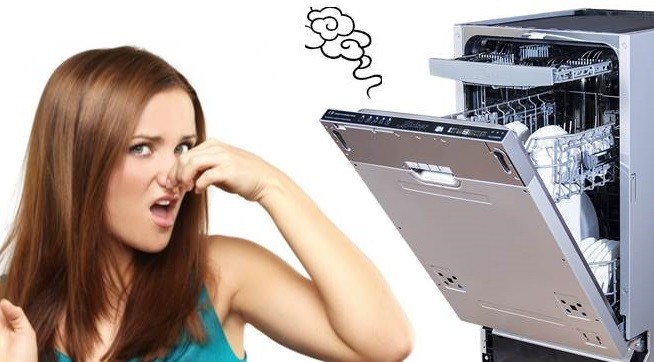
Therefore, if there is water in the salt compartment of the dishwasher, then there is nothing to worry about if it does not pour out of the reservoir. If it overflows or smells unpleasant, then you need to eliminate possible causes that may be hidden in the incorrect location of hoses, pumps, sensors and PMM filters.
Interesting:
Reader comments
- Share your opinion - leave a comment

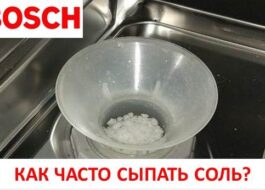
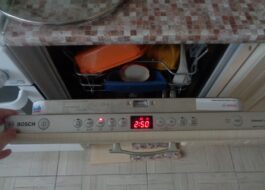

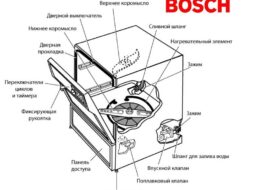
















Add a comment